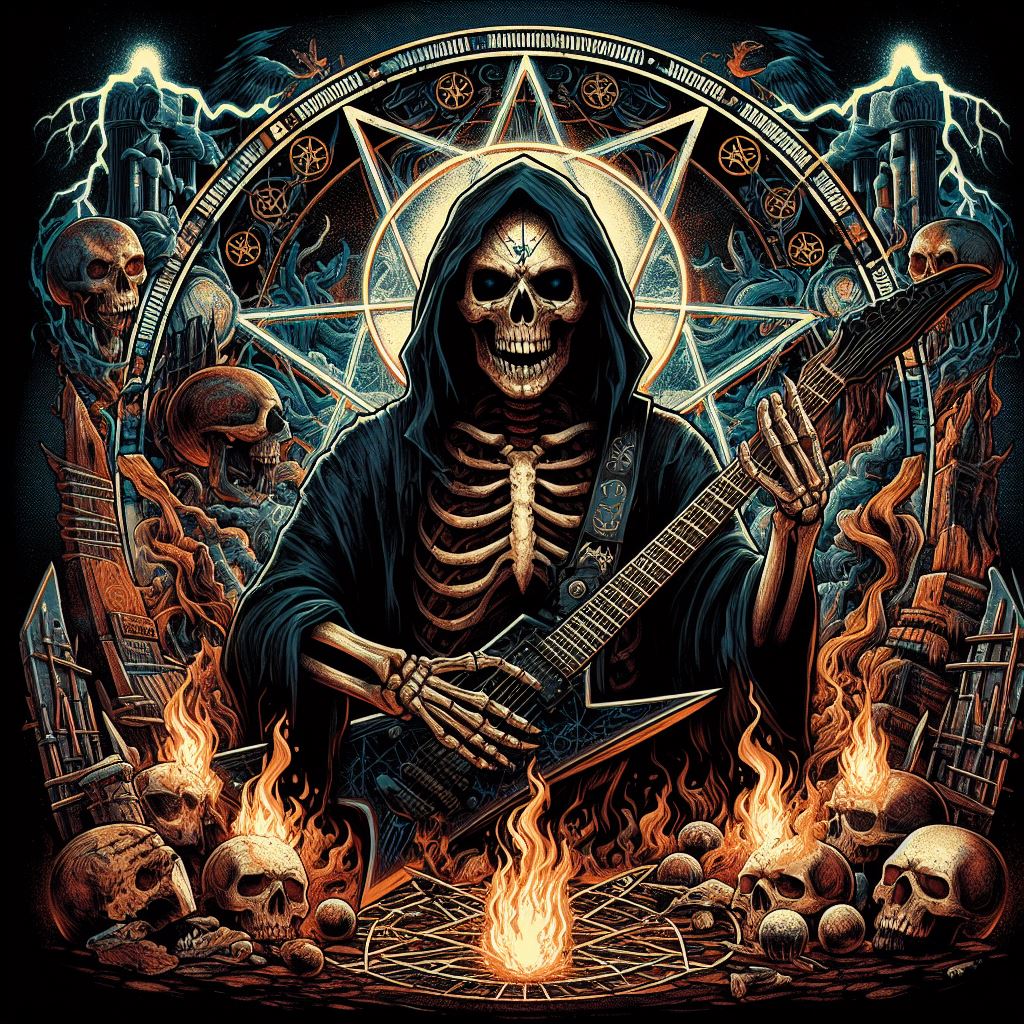Blind Guardian, the German power metal titans, have carved their name into the halls of heavy metal history. Their soaring vocals, intricate guitar work, and fantastical lyricism have captivated audiences for over three decades. But the journey from a group of teenagers in Krefeld, West Germany, to becoming one of the genre’s most influential bands is a story filled with evolution and unwavering passion.
Early Days: Lucifer’s Heritage and the Birth of Blind Guardian (1984-1988)
The band’s origins trace back to 1984, formed under the name Lucifer’s Heritage. The core duo of Hansi Kürsch (vocals and bass) and André Olbrich (guitars) were joined by Markus Dörk (guitars) and Thomen Stauch (drums). This early incarnation saw them experimenting with a raw, speed metal sound heavily influenced by the likes of Iron Maiden and Helloween. They released two demos, “Symphonies of Doom” (1985) and “Battalions of Fear” (1986), showcasing their potential but lacking the polish that would define their later work.
Realizing the potentially negative connotations of their initial name, the band sought a fresh start. Inspired by Fates Warning’s album “Awaken the Guardian,” they adopted the moniker Blind Guardian in 1987. This shift also saw the arrival of a new rhythm guitarist, Marcus Siepen, solidifying the lineup that would remain stable for the next 18 years.
Breaking Through: Battalions of Fear and the Power Metal Pioneers (1988-1995)
With a new name and a refined sound, Blind Guardian released their debut album, “Battalions of Fear,” in 1988. While still showcasing their speed metal roots, the album hinted at the melodic sensibilities that would become their trademark. Tracks like “Welcome to Dying” and “By the Gates of Madness” displayed their fierce musicianship and Kürsch’s powerful, yet versatile vocals.
Their follow-up album, “Follow the Blind” (1989), marked a turning point. While retaining the energy of their debut, the band incorporated orchestral arrangements for the first time, adding a new layer of depth and grandeur to their music. Songs like “A Past and Future Secret” and the epic title track solidified their reputation as rising stars in the European metal scene.
The 1990s saw Blind Guardian truly establish themselves as power metal pioneers. Albums like “Tales from the Twilight World” (1990) and “Somewhere Far Beyond” (1992) cemented their signature sound. Their music became more complex, incorporating intricate guitar duels, soaring choruses, and lyrics heavily inspired by mythology and fantasy. Tracks like “Lord of the Rings” and “Imaginations from the Other Side” became anthems for metalheads worldwide.
A Concept Masterpiece: Nightfall in Middle-earth and Beyond (1996-2006)
Blind Guardian’s magnum opus arrived in 1998 with “Nightfall in Middle-earth.” This concept album, based on J.R.R. Tolkien’s epic “The Silmarillion,” showcased the band’s ability to weave intricate narratives through their music. Songs like “Mirror Mirror” and “Nightfall” became instant classics, further solidifying their reputation for intelligent and captivating songwriting.
The band continued to explore diverse themes in the following years. “A Twist in the Myth” (2001) delved into Greek mythology, while “At the Edge of Time” (2006) tackled science fiction concepts. Throughout these albums, Kürsch relinquished his bass duties to focus solely on vocals, allowing Frederik Ehmke to join on drums in 2005, marking the first lineup change in the band’s core for nearly two decades.
Evolution and Legacy: The Later Years (2006-Present)
Blind Guardian’s later work showcased a willingness to experiment while retaining their core identity. Albums like “Beyond the Red Horizon” (2010) and “Twilight Orchestra 2019” (2019) featured a more progressive approach, with the latter being an orchestral reimagining of their greatest hits.
Today, Blind Guardian remains a force in the metal scene. Their influence on countless power metal bands is undeniable. With their soaring melodies, intricate musicianship, and fantastical storytelling, they have transported listeners to new worlds for over three decades. Their legacy is one of unwavering creativity and a commitment to pushing the boundaries of heavy metal.

Leave a Reply